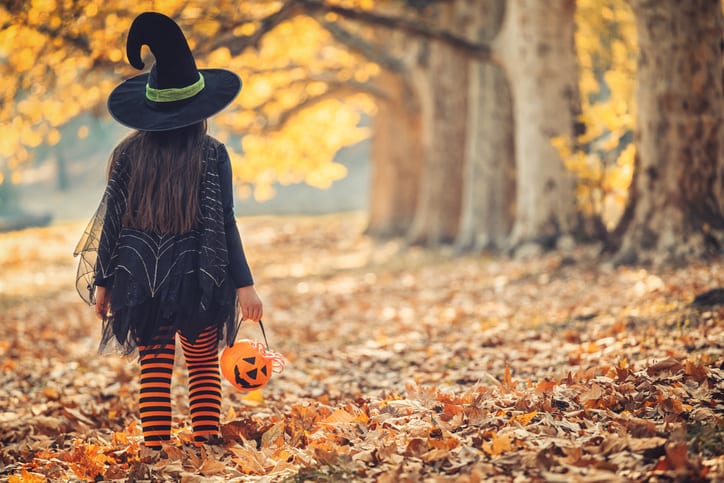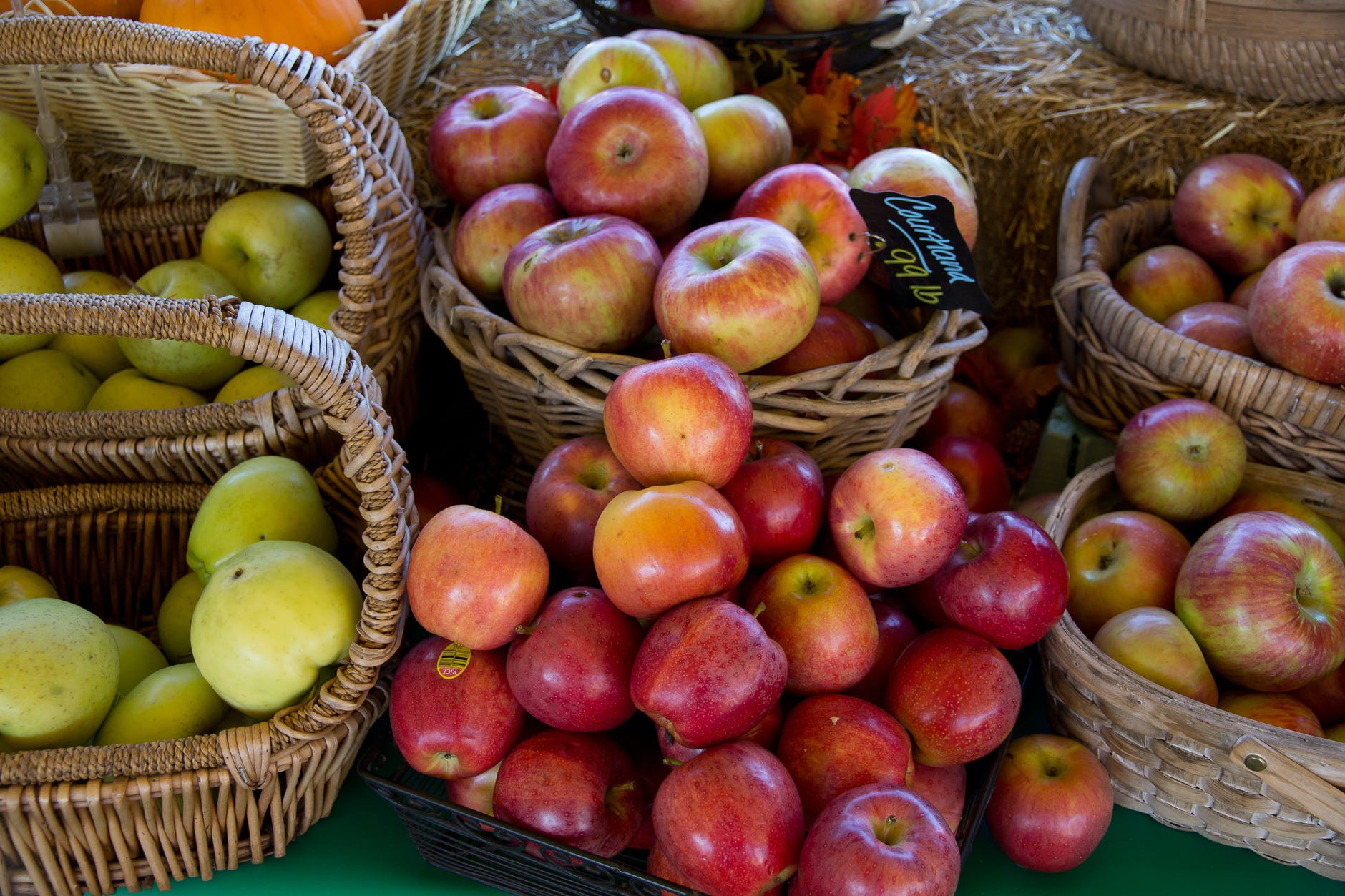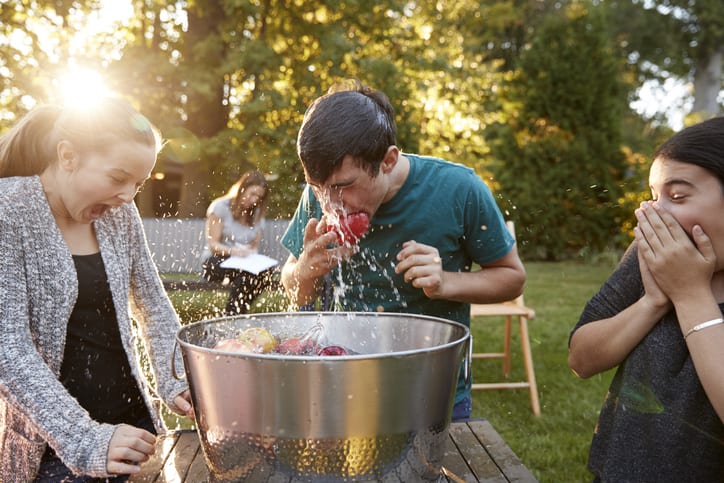If you think that tying children’s hands behind their backs and shoving their faces into cold water in an attempt to latch on to a probably mealy piece of fruit is sort of a strange tradition, well…you’re not wrong.
You’re also not alone, as this Halloween party game has pretty much moved aside to make room for costumes, trick-or-treating, candy, and other spooky-type traditions as opposed to borderline-torturing party guests.
Image Credit: iStock
Where did it come from to begin with, and why? Well, buckle up, and get ready – because it’s a little bit romantic.
Historically, apples have long (like since the beginning of Biblical time) been associated with fertility – they’re actually known aphrodisiacs. Joan Morgan, a British apple expert and fruit historian (that’s a thing, I guess), told Salt that “apples, apple peels, and even pips have long been used to peer into the romantic future.”
The idea came across to America when Europeans carried apple seeds on the boats to bring along good fortune.
Image Credit: Pexels
The idea of bobbing for apples is also a very old tradition, one that started as a sort of courting ritual for young lovers. In one version, if the young lady bit into the apple that held the name of her special someone on the first try, it was like fate giving them the go-ahead.
If it took her two tries, they probably weren’t destined for forever, and three? Pack it in, bucko.
Other games included the first person to bite into an apple being the next to marry, and girls placing the apples they bit under their pillows in exchange for seeing her true love in a dream.
As far as apples and Halloween, the two have also long gone hand-in-hand. Another apple/Halloween game is called Snap Apple, and to play, an apple is pierced with a stick on one side and a candle on the other. The apple moves and spins around the room as people try to take bites out of it, which honestly, sounds hard and also sort of dangerous?
Image Credit: iStock
The game is so well-known and popular in places like England and Ireland that October 31 – smack in the middle of harvest season – is known as “Snap-Apple Night.”
Many of our Halloween traditions come from Celtic lore and history – pagan and otherwise – so it’s no surprise that in America, our All Hallow’s Eve had historically included some kind of interaction with apples.
Now, though, you know why!
And I don’t know about you, but I don’t think I’m ever going to look at apples quite the same, now that I know romance is involved.
The post This is Why We Bob for Apples on Halloween appeared first on UberFacts.



 PRCC 2020
PRCC 2020

 #halloween #halloweencostume #witch #spaghetti #spaghetts #silly #sillycat #cat #cats #catstagram #catsofinstagram #instacat #catsburyparkalumni #rescue #rescuecat #adoptdontshop #fosterssavelives #catlover #catlady #throwback #throwbackthursday #thursday
#halloween #halloweencostume #witch #spaghetti #spaghetts #silly #sillycat #cat #cats #catstagram #catsofinstagram #instacat #catsburyparkalumni #rescue #rescuecat #adoptdontshop #fosterssavelives #catlover #catlady #throwback #throwbackthursday #thursday
